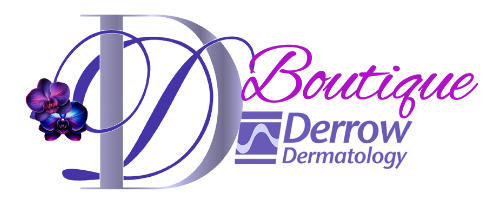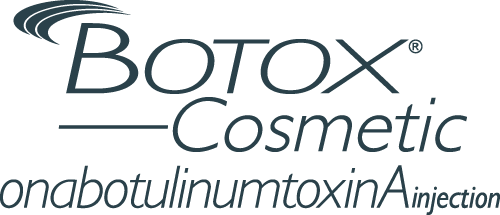Laser hair removal is often associated with convenience and smooth skin, but sensitive areas—like underarms, bikini lines, and facial zones—pose unique challenges that aren’t widely discussed. Beyond pain or discomfort, these areas react differently due to thinner skin, higher nerve density, and hormonal influences. Understanding how laser technology, preparation, and professional technique interact with these factors allows patients to safely achieve long-lasting results while minimizing irritation and protecting delicate skin.
What Makes an Area “Sensitive”?
Sensitive areas aren’t just about pain—they involve structural and biological differences that affect how skin responds to laser treatment. Thinner skin and higher nerve density, common in underarms, bikini lines, and facial zones, make these areas more prone to irritation, redness, or discomfort. Hormonal fluctuations also influence hair growth patterns, especially in the bikini area or upper lip, creating variability in treatment effectiveness. Additionally, certain skin types may be more reactive, with a higher risk of pigmentation changes if not treated carefully. Even friction-prone zones, like underarms or inner thighs, require special attention to prevent irritation. Understanding these subtle differences helps tailor laser settings and techniques for safe, effective hair removal.
Safety Considerations for Sensitive Areas
Laser hair removal on sensitive areas requires more than just careful targeting—it involves understanding skin biology, hair type, and individualized risk factors. Many patients assume that discomfort is the only concern, but there are several safety elements that are often overlooked:
- Is Laser Hair Removal Safe for Sensitive Skin?
Modern lasers can be adjusted for wavelength, pulse duration, and intensity to accommodate delicate skin, minimizing the risk of burns or hyperpigmentation. Dermatologists assess skin type, hair color, and area sensitivity before treatment, ensuring each session is tailored to the patient’s unique needs. - Precautions Before Treatment
Preparation is key for sensitive areas. Avoiding sun exposure, harsh skincare products, and certain medications prior to treatment reduces the likelihood of irritation, pigmentation changes, or delayed healing. Shaving the area before treatment, rather than waxing or plucking, helps the laser target hair follicles more effectively while protecting the surrounding skin. - Pain Management Strategies
Discomfort in sensitive areas can be managed with topical numbing creams, cooling devices, and shorter laser pulses. Some dermatology clinics schedule sessions in segments or use specialized handpieces for small or delicate areas to make the experience more comfortable. - Post-Treatment Care
Sensitive skin benefits from gentle cleansing, moisturizing, and sun protection after treatment. Avoiding friction, tight clothing, and hot showers in the first 24–48 hours can reduce irritation and support optimal results. - Monitoring for Reactions
Even with careful planning, redness, swelling, or temporary pigmentation changes may occur. Early recognition and follow-up with a professional can prevent complications and ensure that sensitive areas heal properly between sessions. - Individualized Approach
Factors like hormonal changes, prior irritation from shaving or waxing, and local anatomy can influence both safety and effectiveness. Tailoring the laser settings and treatment intervals to each patient’s physiology is critical for achieving smooth, long-lasting results while minimizing risk.
By considering these factors, sensitive areas can be treated safely and effectively, providing the benefits of laser hair removal without compromising skin health.
Popular Sensitive Areas for Laser Hair Removal
Certain areas of the body are commonly treated but require extra care due to sensitivity. Underarms have thin skin and frequent friction, making precise laser settings essential to minimize irritation. Bikini and intimate areas are highly vascular and hormonally influenced, which can affect hair growth patterns and sensitivity, requiring careful planning and patient-specific adjustments. Facial areas, like the upper lip, chin, and jawline, are prone to redness and pigmentation changes if treated aggressively, so specialized handpieces and lower energy settings are often used. Even legs and inner thighs, while larger, contain delicate zones where friction or hair density can impact comfort and results. Each area benefits from a tailored approach to ensure both effectiveness and safety.
Expected Results and Timeline
Results from laser hair removal on sensitive areas vary depending on hair thickness, growth cycles, and skin type. Most patients notice a reduction in hair growth after the first two to three sessions, but delicate areas like the bikini line or upper lip may require additional treatments for optimal results. Sessions are typically spaced four to six weeks apart to target hair in its active growth phase. Over time, hair becomes finer and lighter, and regrowth slows significantly. Some patients may need maintenance treatments once or twice a year. Patience and consistency are key, as sensitive areas respond differently than less delicate zones.
Common Myths and Misconceptions
Laser hair removal on sensitive areas comes with many misconceptions that can deter patients from seeking safe, effective treatment:
- It’s unbearably painful
While some discomfort is normal, topical numbing, cooling devices, and precise laser settings significantly reduce pain—even in delicate zones like the bikini line or underarms. - All lasers work the same
Different wavelengths and pulse durations are required for sensitive areas. Using the wrong device or settings can increase irritation or reduce effectiveness. - It causes permanent skin damage
When performed by trained professionals, the risk of burns or pigmentation changes is minimal, even on highly reactive skin. - Results are immediate
Hair grows in cycles, so multiple sessions spaced weeks apart are necessary for long-lasting reduction. - Sensitive areas can’t be treated safely
With proper preparation, individualized settings, and post-treatment care, delicate zones can be treated effectively without compromising skin health.
These clarifications help patients make informed decisions and approach laser hair removal with realistic expectations.
Conclusion: Achieving Safe Results with Laser Hair Removal
Laser hair removal on sensitive areas is both safe and effective when approached with the right preparation, technique, and professional guidance. Understanding the unique characteristics of delicate zones, addressing misconceptions, and tailoring treatments to individual skin types ensures optimal results with minimal discomfort. Whether it’s underarms, bikini lines, facial areas, or other sensitive spots, a personalized plan can provide long-lasting smoothness and confidence. To explore the best approach for your skin and learn which areas can be safely treated, visit us at Derrow Dermatology or call 407-389-2020 to schedule a consultation with our expert team.











